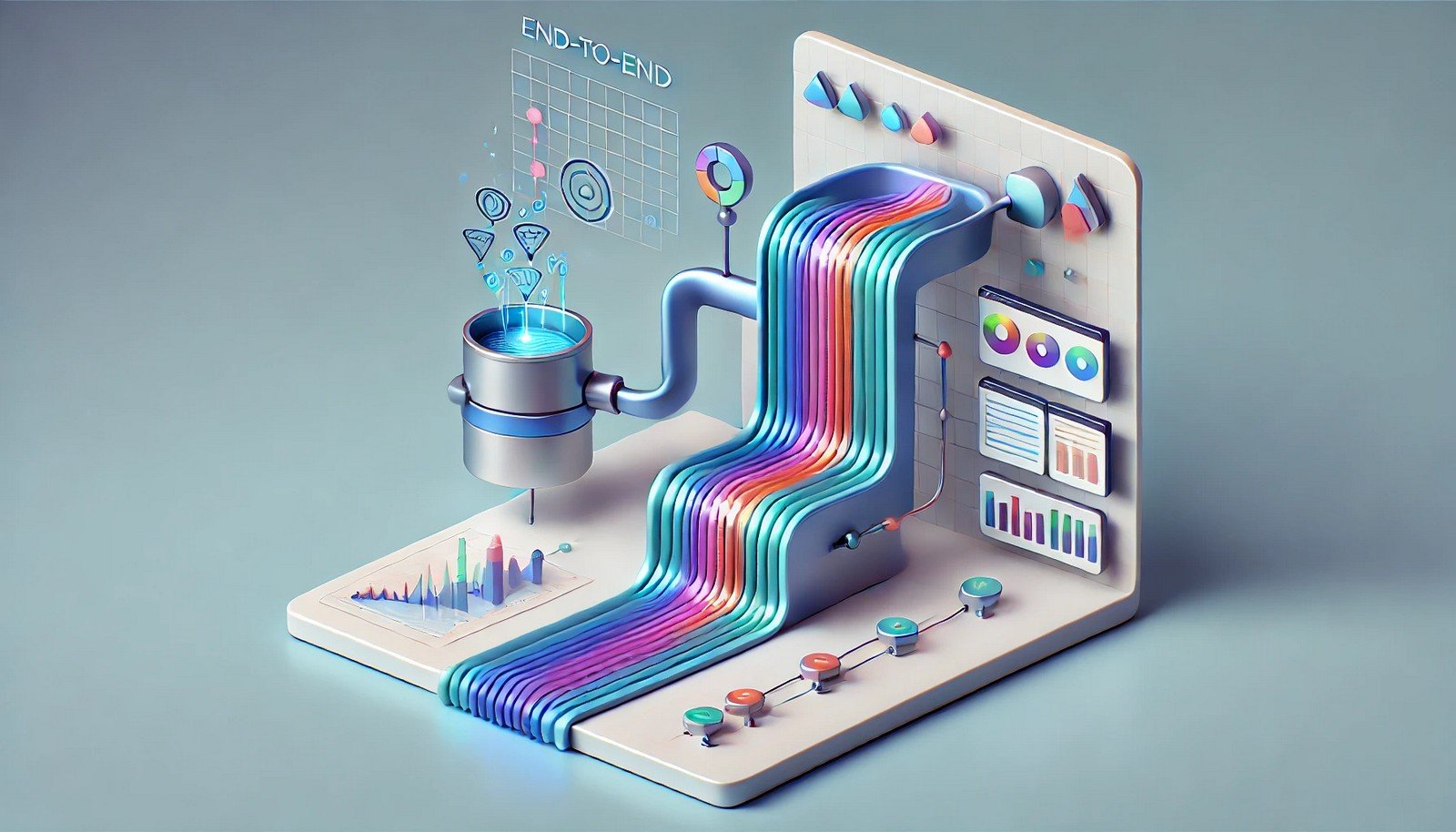End-to-End Learning

Quick Navigation:
- End-to-End Learning Definition
- End-to-End Learning Explained Easy
- End-to-End Learning Origin
- End-to-End Learning Etymology
- End-to-End Learning Usage Trends
- End-to-End Learning Usage
- End-to-End Learning Examples in Context
- End-to-End Learning FAQ
- End-to-End Learning Related Words
End-to-End Learning Definition
End-to-End Learning is a machine learning approach where an entire system learns to perform a task directly by optimizing a single model from input to output. This contrasts with traditional systems, which require several steps and feature engineering. End-to-End Learning enables a unified model that reduces dependencies and optimizes performance for complex tasks, especially in neural networks used in computer vision and language processing.
End-to-End Learning Explained Easy
Imagine learning to ride a bike without anyone helping or explaining. With practice, you figure out the balance and speed all by yourself. End-to-End Learning is like that for computers—they figure out the best way to complete a task from start to finish on their own, without step-by-step instructions.
End-to-End Learning Origin
The concept of End-to-End Learning originated as neural networks advanced, particularly in the 2010s. By removing the need for specific feature engineering, the method became popular in applications like self-driving cars and speech recognition.
End-to-End Learning Etymology
The term "End-to-End" refers to a model that performs the task from start (input) to finish (output), capturing all stages in one continuous process.
End-to-End Learning Usage Trends
End-to-End Learning has become more prominent with deep learning, which allows networks to optimize complex tasks without needing handcrafted features. It's commonly used in areas like autonomous driving, natural language processing, and recommendation systems.
End-to-End Learning Usage
- Formal/Technical Tagging:
- Machine Learning
- Deep Learning
- Neural Networks - Typical Collocations:
- "end-to-end learning model"
- "end-to-end training process"
- "input-output mapping with end-to-end learning"
End-to-End Learning Examples in Context
- Self-driving cars use End-to-End Learning to process camera inputs and predict driving actions directly.
- In speech-to-text applications, End-to-End Learning enables direct conversion of audio signals to transcriptions.
- Recommendation systems in e-commerce can use End-to-End Learning to analyze user data and make personalized suggestions.
End-to-End Learning FAQ
- What is End-to-End Learning?
End-to-End Learning is a training method where a model learns a task from input to output without intermediate steps. - How does End-to-End Learning differ from traditional machine learning?
Traditional methods require separate steps for feature extraction and decision-making, while End-to-End Learning optimizes everything in one model. - Why is End-to-End Learning popular in AI?
It simplifies the process, removes feature engineering, and often achieves better performance on complex tasks. - Where is End-to-End Learning applied?
It’s widely used in autonomous vehicles, speech recognition, and NLP. - What are the challenges of End-to-End Learning?
The models can be difficult to train, need large amounts of data, and may struggle with interpretability. - How does End-to-End Learning work in self-driving cars?
It takes raw camera input and maps it directly to steering controls, simplifying the process. - What are some benefits of End-to-End Learning?
It’s efficient, reduces complexity, and can generalize well on new data if trained properly. - How is End-to-End Learning used in NLP?
It processes text data directly, mapping it to outputs like responses or translations without preprocessing. - What makes End-to-End Learning powerful in recommendation systems?
It captures complex user behavior patterns without manual feature engineering, improving personalization. - Can End-to-End Learning be used with small datasets?
It's challenging but possible; however, it usually performs best with large datasets.
End-to-End Learning Related Words
- Categories/Topics:
- Deep Learning
- Artificial Intelligence
- Autonomous Systems
Did you know?
End-to-End Learning has enabled rapid development in self-driving technology, with companies training models on millions of road images and data points to improve safety and performance, accelerating progress in autonomous driving.
PicDictionary.com is an online dictionary in pictures. If you have questions or suggestions, please reach out to us on WhatsApp or Twitter.Authors | Arjun Vishnu | @ArjunAndVishnu

I am Vishnu. I like AI, Linux, Single Board Computers, and Cloud Computing. I create the web & video content, and I also write for popular websites.
My younger brother, Arjun handles image & video editing. Together, we run a YouTube Channel that's focused on reviewing gadgets and explaining technology.



Comments powered by CComment